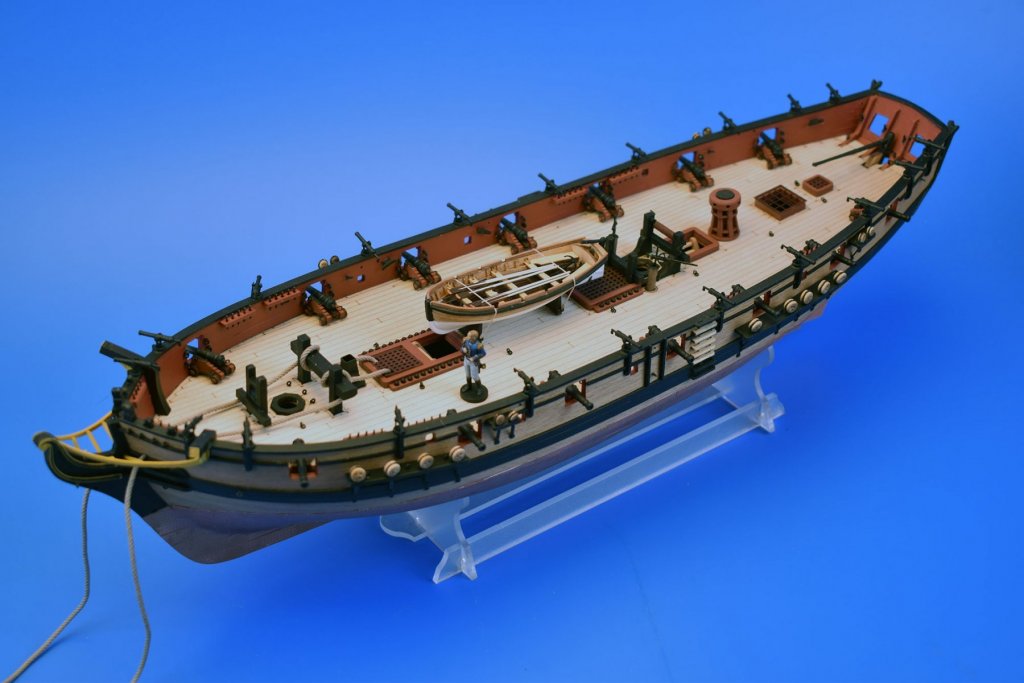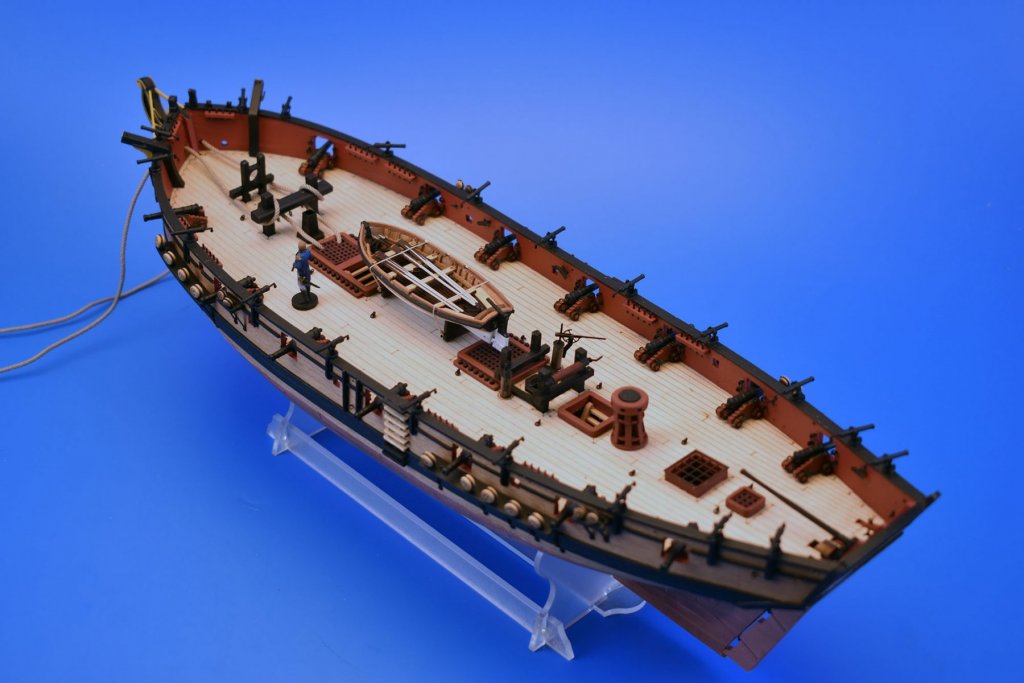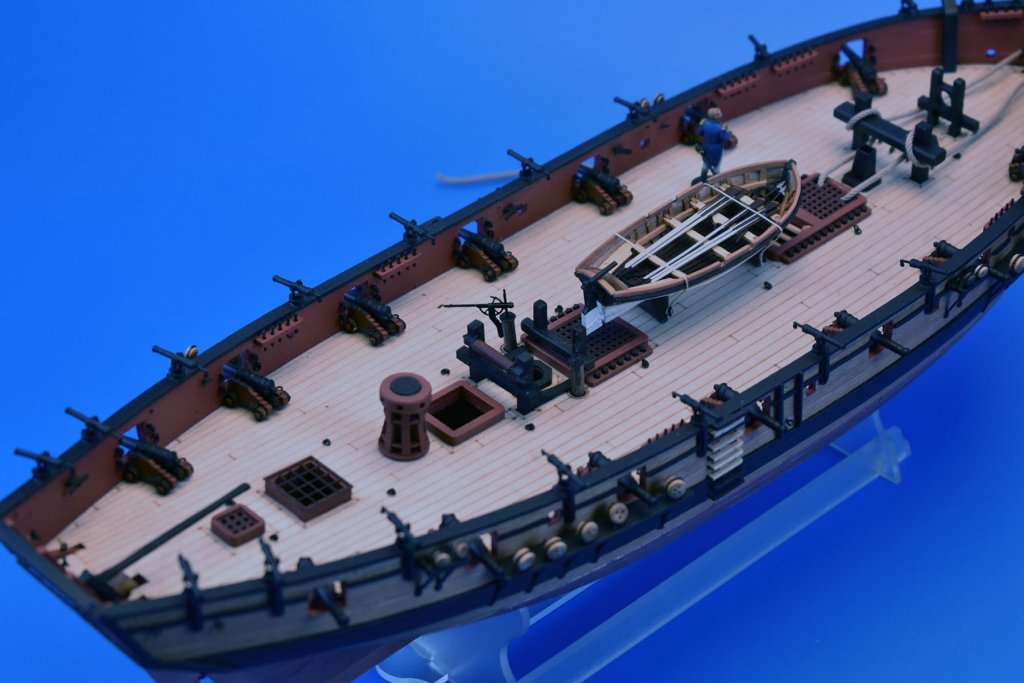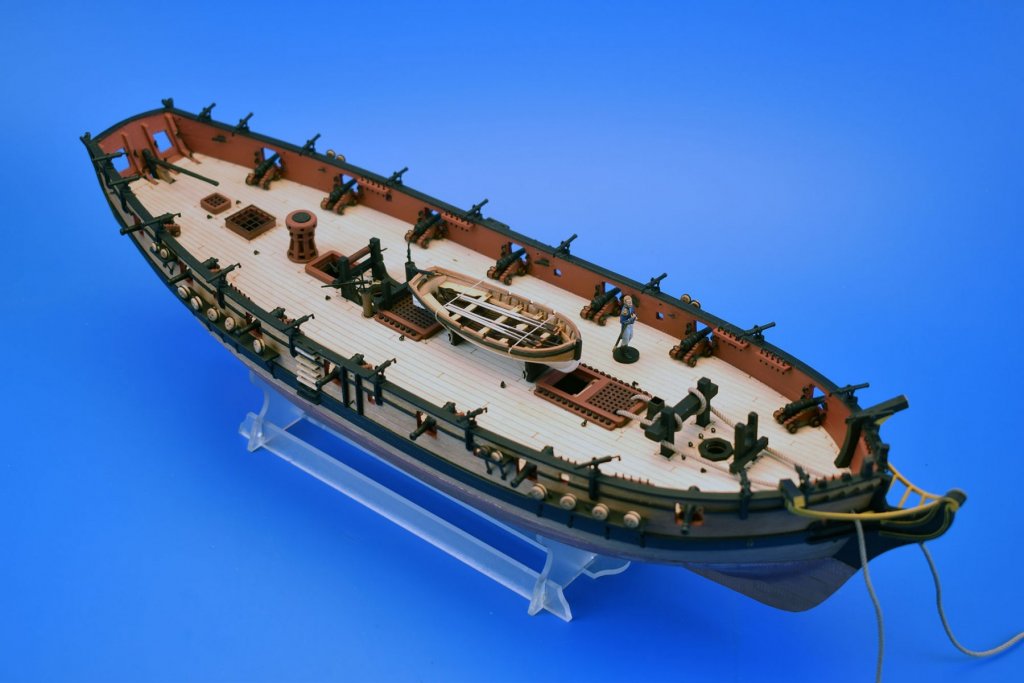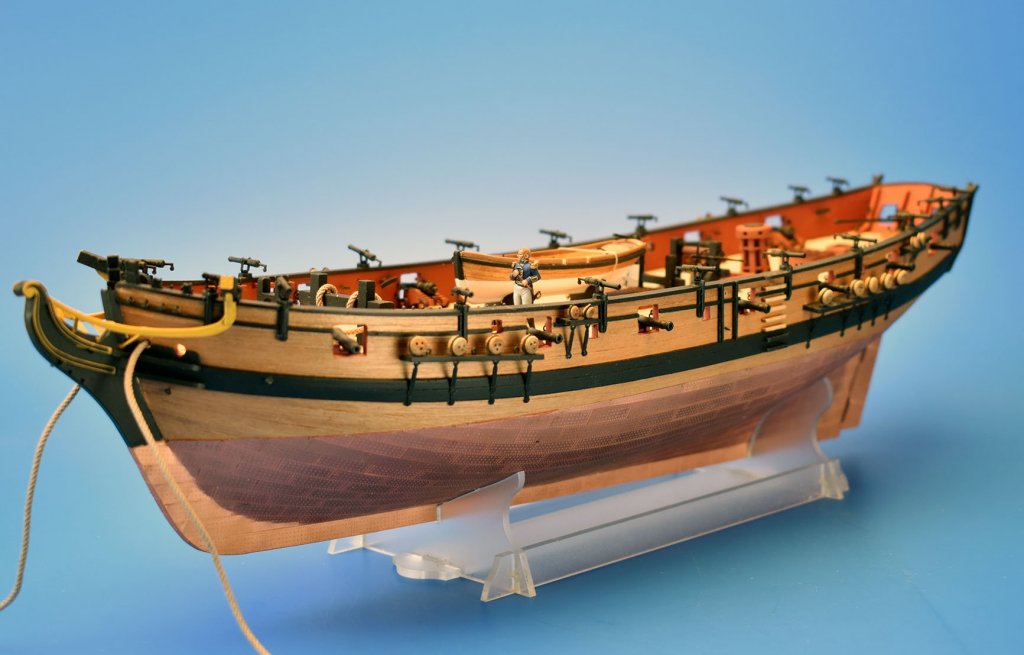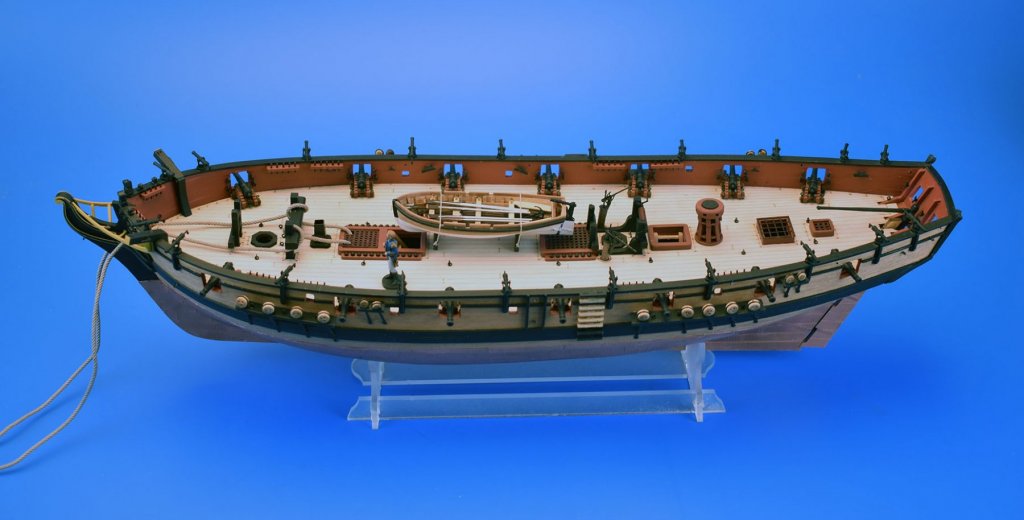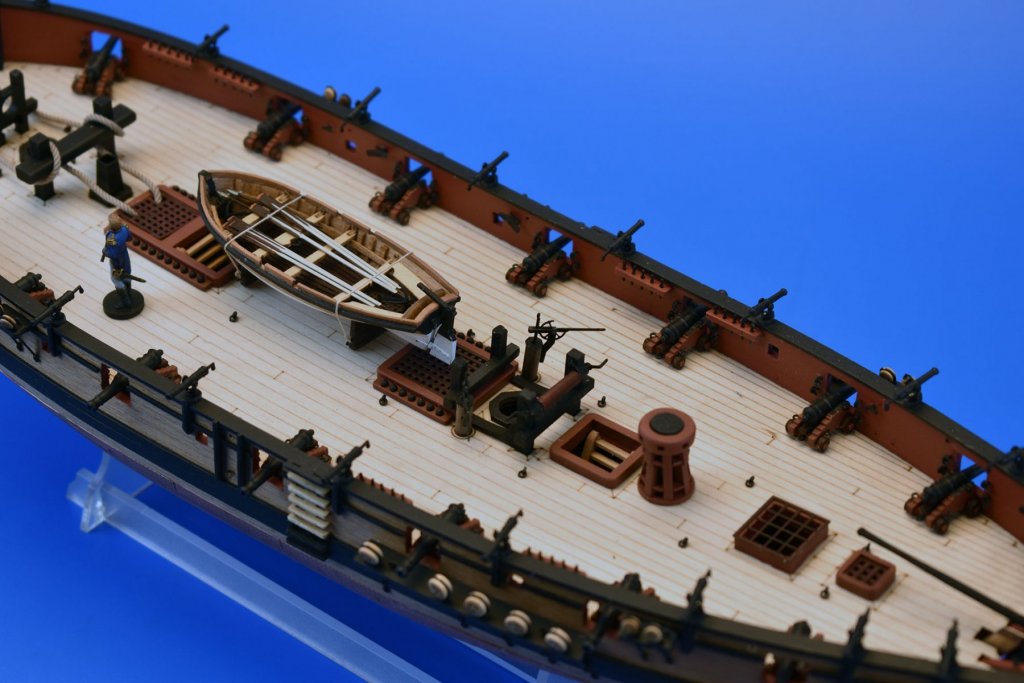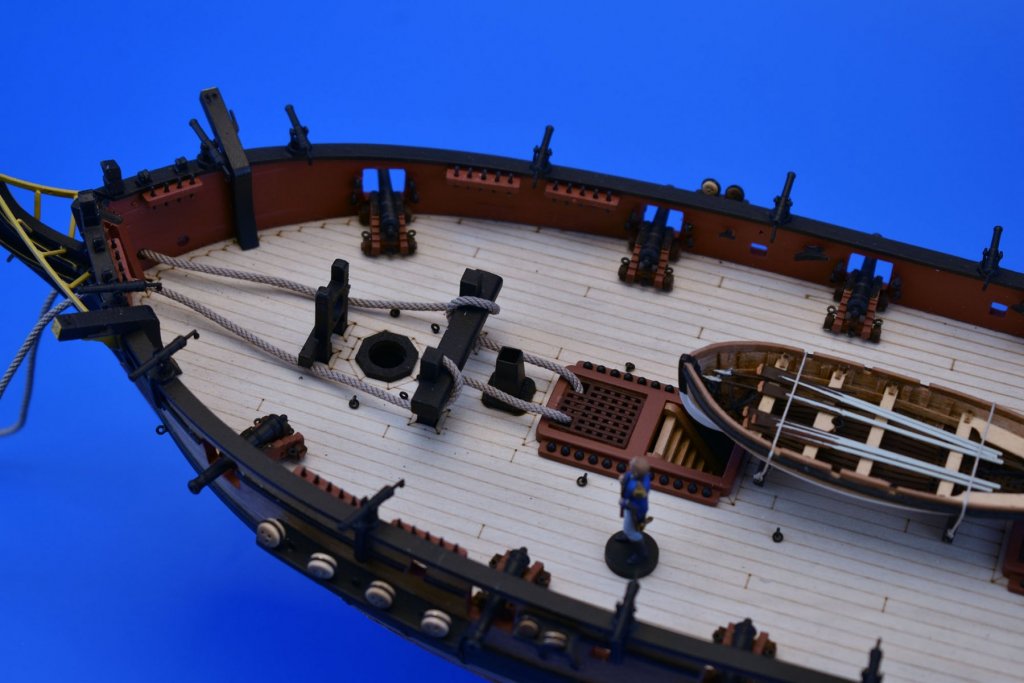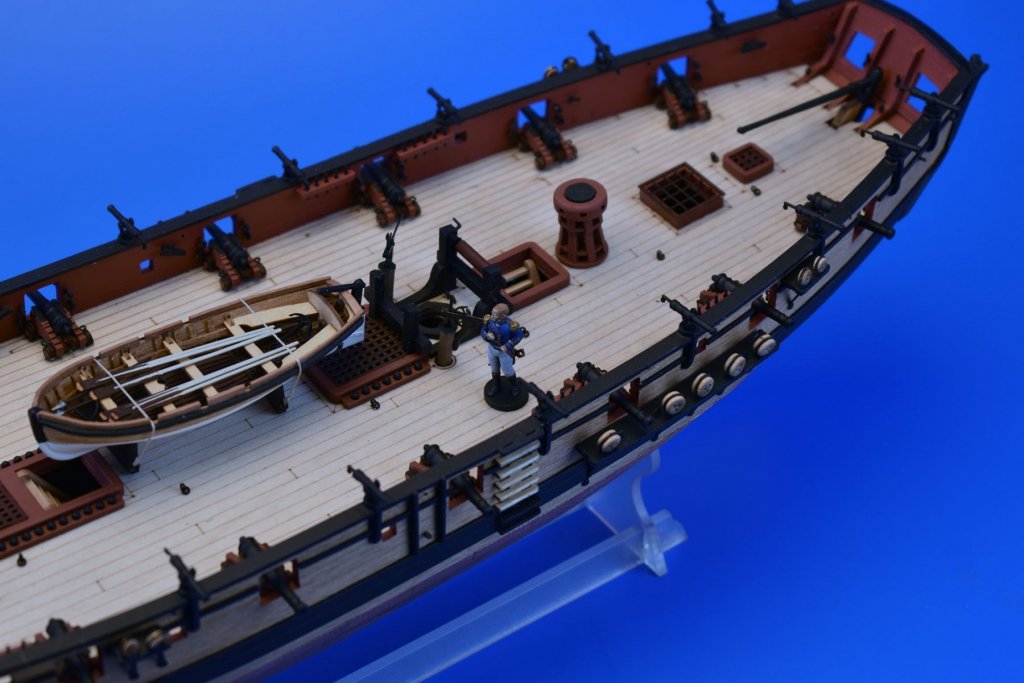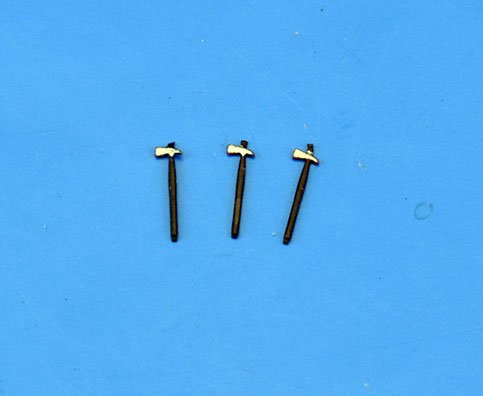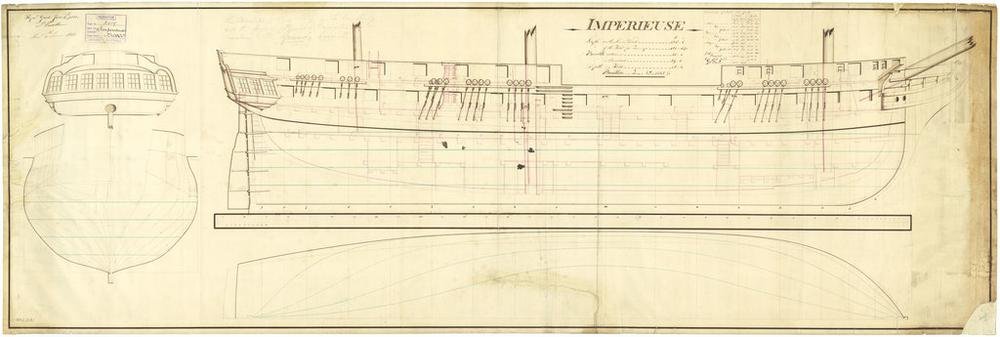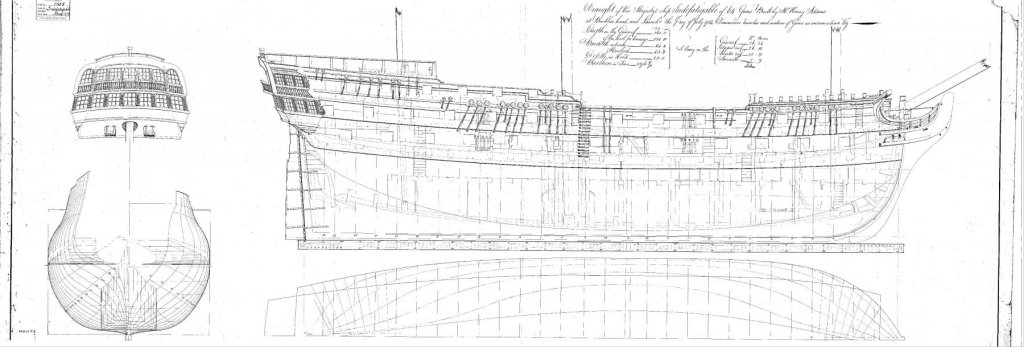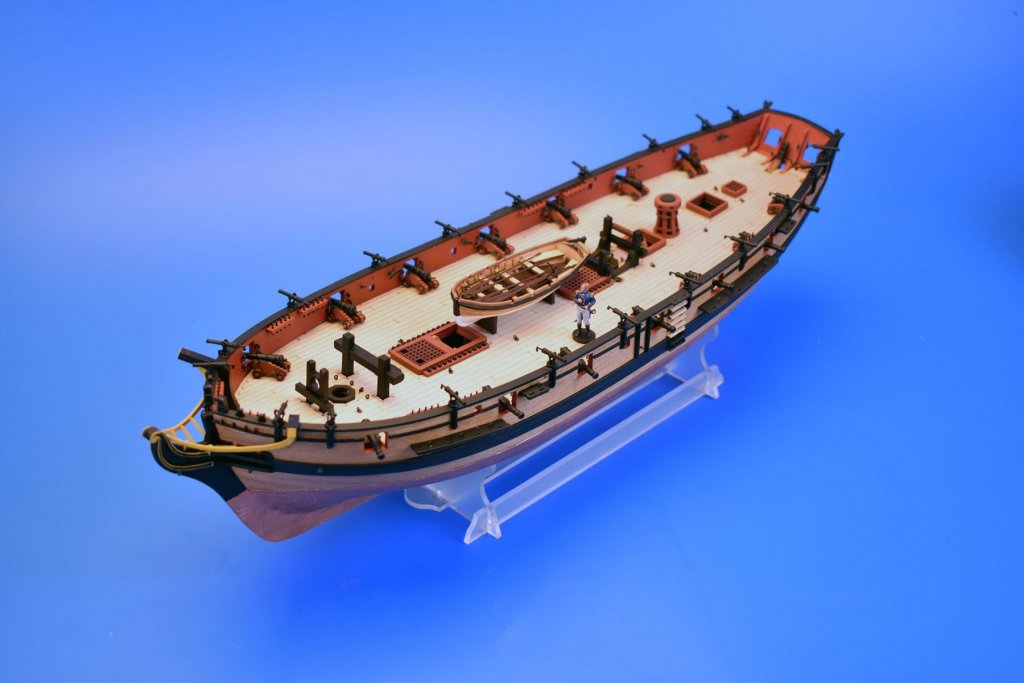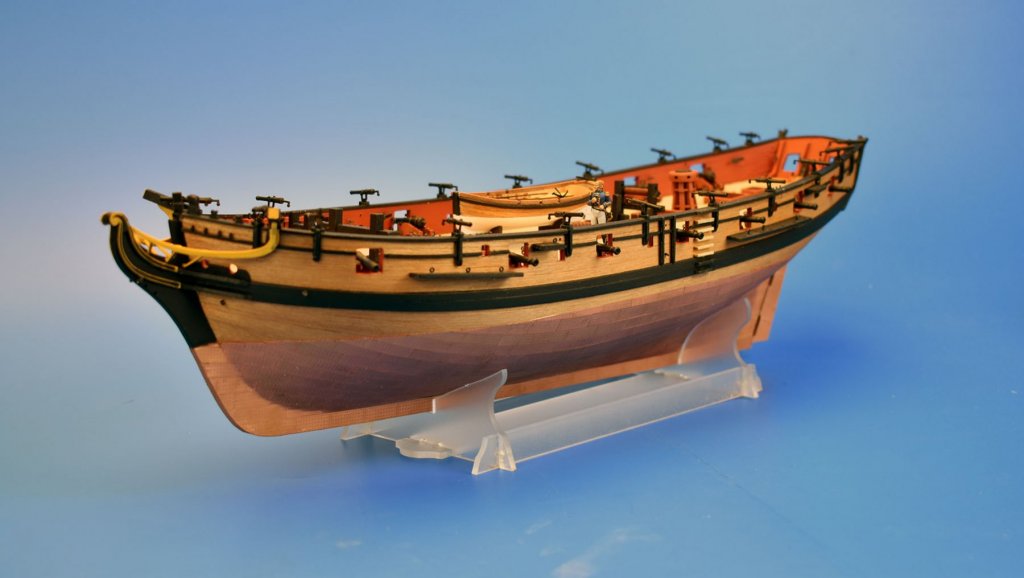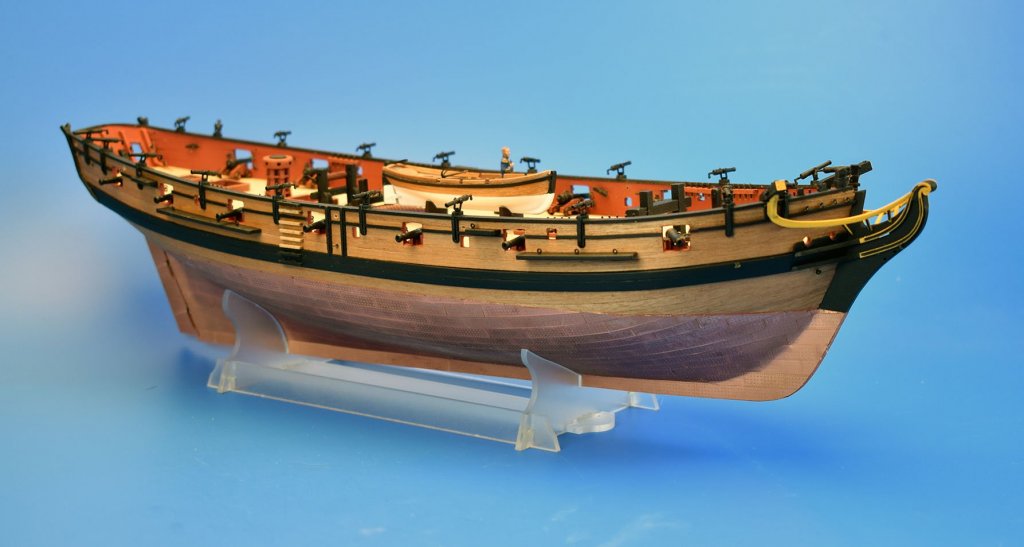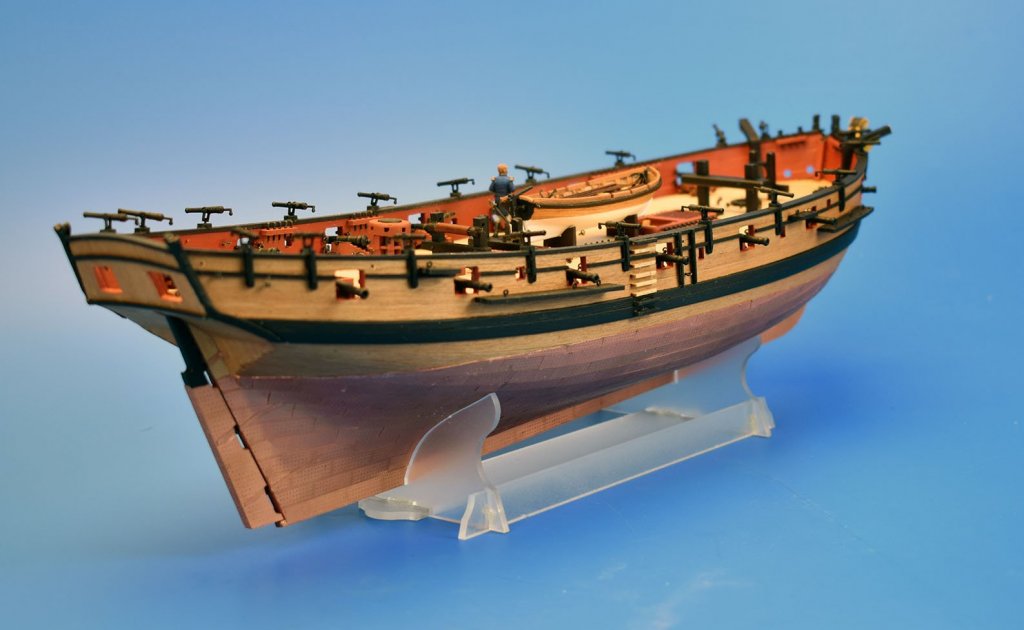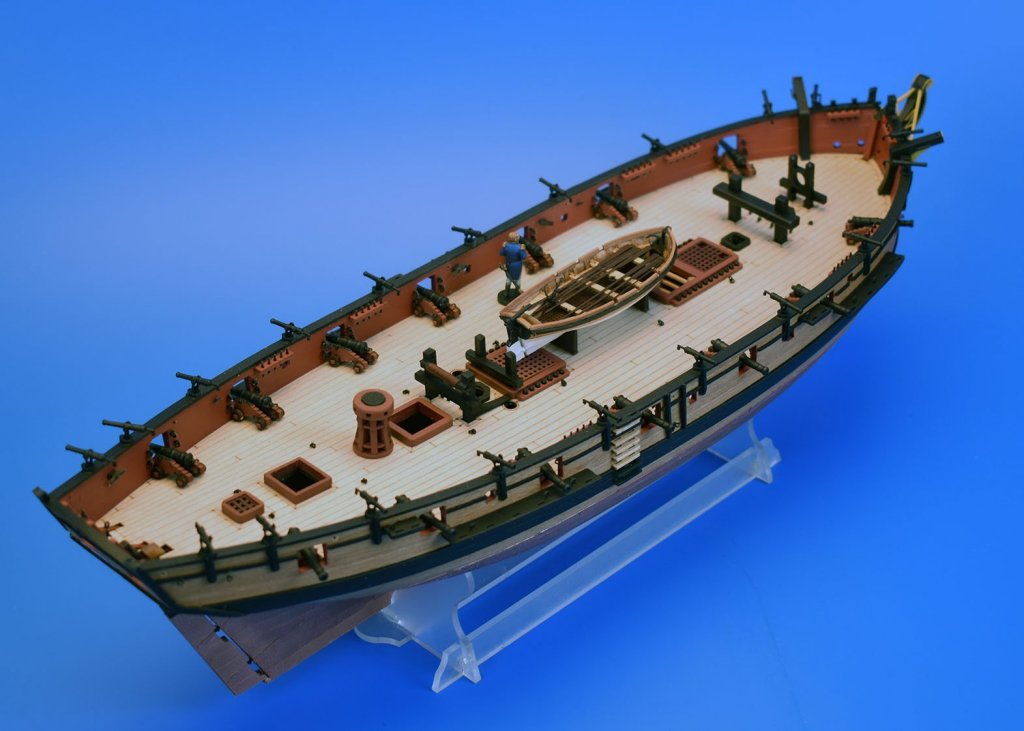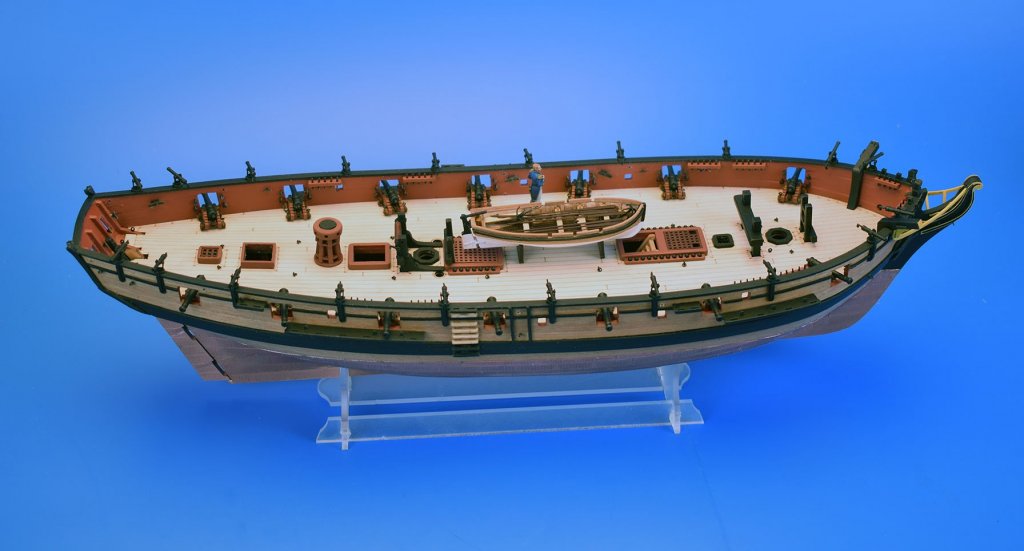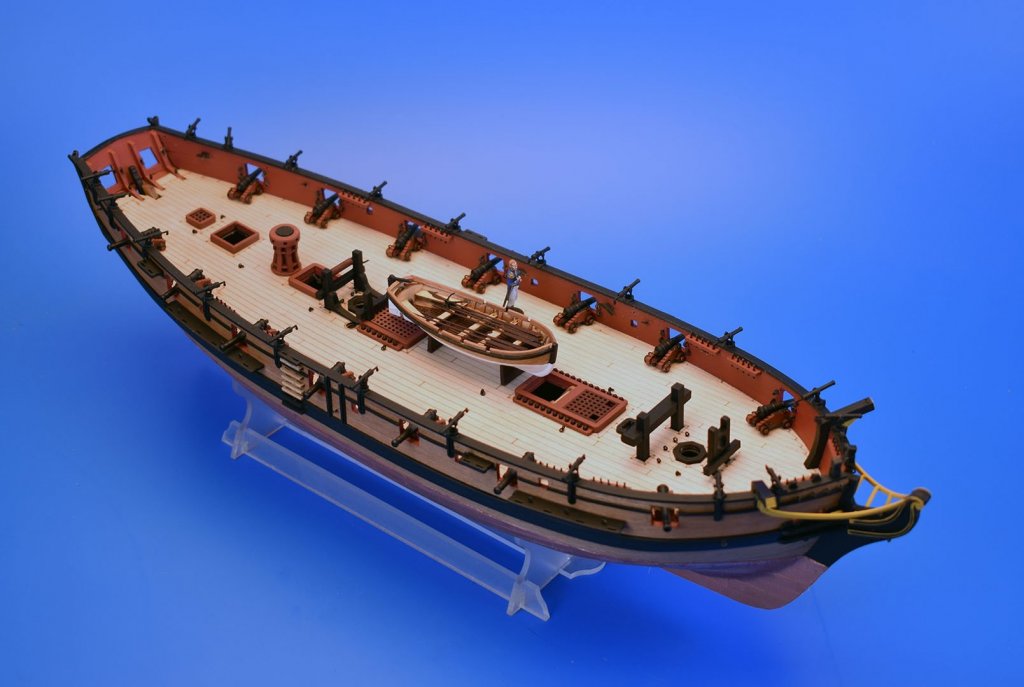-
Posts
2,235 -
Joined
-
Last visited
Content Type
Profiles
Forums
Gallery
Events
Everything posted by chris watton
-
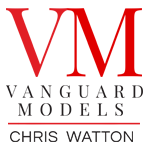
ancre La Belle 1684 by Oliver1973 - 1/36
chris watton replied to Oliver1973's topic in - Build logs for subjects built 1501 - 1750
Great subject, and great CAD work, too. -
I had the amended 3 and 0.8mm laser cut parts for third kit arrive yesterday, just before I had to go to work, so couldn't do anything with them until this morning. Everything is just quickly dry-fitted, no glue or pins at all. I have gone to town regarding the structural rigidity, no balsa filling blocks required for this! The decks fit into slots located on the inner sides of the bulkhead tabs, so no pins required for the edges and impossible for the edges of the decks to move, so deck line always follows the correct positions. I am also trying out a new way to create a rabet, as you can see from the bow. This is a pre-prototype, it will not be used for building the model, it is just to check the critical hull assembly and making sure everything fits and interlocks as they should - and will be thrown away at some point..
-
OK, Speedy hull now complete. I did have to reduce the length of the chainplates for the 5mm deadeyes by 2mm, as they should only be pinned to the main wale, so the ones shown are a little too low - but rectified for the kit. Hand pumps finally in place, nice easy builds with PE parts, and the stove chimney is PE this time, to give the correct scale appearance. Everything is now glued down apart from the boat, which is simply pinned in place at this time. Boomkins are missing, but they will be added once bowsprit gammoning is in place (experience...) I have also included half a dozen hatchets, which were used primarily to cut fouled rigging away.
-
ASAT, Bristol will be first half of next year. I had to take a step back and be realistic. I know that Bristol will have the same new design principals as the large Amati Victory I did. The Victory took me two years to design, build the model and picture taking, and plans and instructions. This almost killed me! Although part of the time was trying to perfect the designs, so now that I know what's required, the next will not be so bad. Although Bristol is not as large as Victory, it will have fundamentally the same designs in the way it is built, a cross between Victory and Prince. I want Bristol as the forth kit and a frigate (or Swan class Atalanta) for the fifth. There is some overlap between each kit development, though. For example, I already have the correct shapes and number of bulkheads, decks and deck levels for Bristol, and same for the third kit, as I need to ensure the decoration at the stern and figureheads are going to fit perfectly. the best way to do this is to have the parts to which they will be attached to already complete, so no nasty surprises if I left it all to the last minute, and realised that what's shown on the original plans doesn't quite tally with how things should be - this happens often.. If I can develop three smaller kits first (Alert, Speedy and the one shown above, which I do not want to name yet), and they end up being successful, I can perhaps think about leaving my day job (which is also killing and restricting me right now), and concentrate fully on the larger, more complex and expensive developments. If working on such projects full time, they should take no longer than the smaller kits are taking me now, as I have an extra 40 hours per week to spend on them. Although I did design/develop the kits at Amati, Amati did format the instruction booklets and sort out the box art. It is only me now that does everything, from sourcing parts, getting the master carvings sorted, putting the plans and instructions together for publishable format, and sorting every other of the seemingly hundreds of things required to get even these smaller kits together. I am still getting used to this heavier workload, and am sure than when I get more used to it, it will become easier. But with working full time as well as doing this, there are only a set amount of hours per day, and the kits are not simple 'block models' anymore, there is a lot more to them. As it stands at this moment however, I need my day job to pay the household bills and preserve my investment money. I am even putting some money into my business account from my wages each month, so every available Penny is being invested. I should finish the Speedy hull assembly today, if I manage that, I will take some pics and post them, I now have the missing 0.4mm PE sheet!
-
Very nice work, a true scale model. Regarding the cupola, was it common for these to be copper, or specific to this particular class, do you know?
-
Well, I did have my pre-prototype parts for the third development arrive today. Unfortunately, the 3mm MDF was cut in the wrong thickness, and was in fact 3.5mm. This meant I could not put all of the structural parts together, as too much filing/sanding was required. Instead, I now have to wait until next Tuesday for the replacement 3mm parts . I did managed to just put together the bare bulkheads and decks. But I was hoping to check out a different way I have designed certain aspects to allow for a proper rabbet for the second planking, and see what you good people thought. This will have to wait until next week now.
-
The pictures of some of the build are on this very thread, the build starts at the orlop..
-
I remember going to a model boat show years ago, and one guy was asking about the kits on offer and then when I told him the prices, he was shocked and said something along the lines of 'But how does this one cost more, the cheaper one has a bigger box?' This is what we have to deal with occasionally...
-
Very nice model! I know Rif Winfield's reference, but the problem is that the original Admiralty plans show 7 windows for the only official contemporary lines for one of the (full two decked, not razee'd) Ardent class. This is the conundrum.. Funny you mention HMS Temeraire, I have been reading The Fighting Temeraire during my tea breaks at work, and it is almost exactly like Victory, if a couple of inches longer. Not much of a career though, only Trafalgar and few much lesser actions. I will be glad to move on from models that have very fragile sterns! But Speedy isn't too bad at all. I designed that Aggy two decades ago, where does the time go....
-
I can say quite categorically that the stern on the 64th scale Victory is not too flat, it has the came curvature as per the plans. Regarding price comparisons with other kits of Victory, please bare in mind that there is a hell of a lot more to this 64th scale version, no other kits have full deck detail for all three gun decks - no dummy barrels.
-
Thank you. No, they were digitally sculpted using contemporary portraits/paintings as reference. Because they are in digital form, the scale can be changed. However, there is still a cost involved, as each master has to be 3-D printed in very high definition, so no details are lost for the production resin castings.
-
Easily done, Gary, as I said, it is very easy to get lost with these things, and I do really appreciate your input, which I think is very important for getting things as right as they can be, given the information we have! OK, the Lord Nelson figure is now available to buy on the website, if anyone's interested: https://vanguardmodels.com/lord-nelson-164th-scale
-
Cheers Gary I am sure that Magnanime was another (different) class of 64 (Magnanime/intrepid class, perhaps, Williams design, whereas Ardent was Slade), and not 74? I thought the second round of razees were 74's, the first three being 64's. Being a different design, Magnanime and all others in her class could well have had 8 windows. As the reason for these razee's was to save money and get powerful frigates as quickly as possible, I am not sure the shipyards would have spent time, or the navy money, on altering what didn't require altering. Problem is many of these ships look more or the same! ETA - the Magnanime/intrepid class did have 8 windows:
-
Hi Gary, Thank you. Yes, I have that book. Each new subject I choose, I get as much information as I possibly can for that particular ship. I am sure my book collection has increased by 50% in the past year, especially for frigates, 50 gun ships, etc. I also make sure I order the correct suite of plans, even looking at sister ships to see if they have any info that may be missing from the named ship plans. For Bristol, Royal George, Indefatigable, Royal Oak and Flirt and Speedy, I purchased everything that is available. Those, with the books, give me a wealth of info. I did buy The First Frigates, The Heavy Frigates, and the one you mentioned, which does give a lot of valuable into on the Indie. Will look a little odd with he shortened poop, and an extra gun port will have to be added to the quarterdeck, abreast of the main mast, both not shown on the plans, as they were Pellew's mods. Because I have been reading a lot about Cochrane, I would like to do this at some point, Imperieuse (1804), a large captured Spanish frigate, which Cochrane used to great effect in the med, helping the Spanish against the French. I thought it would be great if I included all of his special boats, and show them with the small carronades, that he used for his many inshore exploits..
-
Thank you guys. I will keep the cutter in for the kit. This one I have tried to design to be as easy and as painless as possible to put together, but at the same time, keep all of the detail. This does mean it will be a little more expensive though (especially with the 34 cast resin cannon barrels and laser engraved deck..), but I think it's worth it if people enjoy building it, and it looks nice once complete. Regarding Agamemnon, I think I am edging towards the idea that it did have 7 windows, rather than 8. I know that when I designed my first one 2 decades ago, this info wasn't so easily accessible, so we ordered the Aggy plans, which have no stern detail, and I used paintings and the Bellona book to fill in the gaps. I would never do that now. Hell, I even ordered the Speedy upper deck plan after the main lines because I couldn't quite make out what the hatch was near the stern (turned out to be the bread hatch). I know Bristol (Portland class 50 gun ships) had 7 windows, but that is a full 14 foot shorter in keel length. I have double checked all available plans on the NMM site, and the Indi is the only one of the Ardent class of 64's that shows the stern. I feel that logically, knowing this, I should go with that. If there were alterations after the drafts, then surely they would have been highlighted on the plans? How many paintings, even the most famous, have we seen of ships we know well, Victory especially, where the details show them at a much later stage in their careers than they should be at the time of the battle depicted? I have attached a copy of the full lines plan for Indie.
-
What would you trust more, the original plans or paintings? I cannot help buy feel Agamemnon would have had seven window openings on the lower tier, as shown on the Indefatigable Admiralty plans. I know most ships, most third rates at least, had 8, so perhaps the artists just assumed this, as this is what they were used to seeing?
-
Bruce, I do not mind at all! This is why I put it to you guys on here, who may have more ideas or information than me. Getting the stern right on these ships is important, I just want to ensure all bases are covered regarding research and the correct conclusions - or, as correct as one can hope for. Right, I think I have gone as far as I can with the Speedy build, as I am waiting for the missing 0.4mm PE parts that include the pump, deadeye strops and other things. Here is where I am at, the cannons are not glued in place as I need to add deadeyes and chain plates first. I have my painted Cochrane figure standing on the deck. The cutter took around two days, and I have positioned it between for the fore and aft hatches, on chocks high enough that the keel clears the combings by a healthy margin. Should I keep this in the kit, does it look OK? I took a couple of shots almost side on, so you can see the great curves, more elegant than the later variants. The stand should be crystal clear, but it is a sacrificial building stand, and I sprayed varnish on it...
-
This is the page for the full Indie lines, complete with stern: https://prints.rmg.co.uk/collections/ship-plans/products/indefatigable-1784-j3954 Now, there is another Ardent (64), but slightly later at 1782, although around the same time frame as the launch of Agamemnon and Indefatigable with almost the same dimensions: https://prints.rmg.co.uk/products/ardent-1782-j3028?_pos=5&_sid=00da2bde1&_ss=r What do you trust, though, several drawings and paintings, many not entirely contemporary, or the original Admiralty lines for the class of ship but a different name?
About us
Modelshipworld - Advancing Ship Modeling through Research
SSL Secured
Your security is important for us so this Website is SSL-Secured
NRG Mailing Address
Nautical Research Guild
237 South Lincoln Street
Westmont IL, 60559-1917
Model Ship World ® and the MSW logo are Registered Trademarks, and belong to the Nautical Research Guild (United States Patent and Trademark Office: No. 6,929,264 & No. 6,929,274, registered Dec. 20, 2022)
Helpful Links
About the NRG
If you enjoy building ship models that are historically accurate as well as beautiful, then The Nautical Research Guild (NRG) is just right for you.
The Guild is a non-profit educational organization whose mission is to “Advance Ship Modeling Through Research”. We provide support to our members in their efforts to raise the quality of their model ships.
The Nautical Research Guild has published our world-renowned quarterly magazine, The Nautical Research Journal, since 1955. The pages of the Journal are full of articles by accomplished ship modelers who show you how they create those exquisite details on their models, and by maritime historians who show you the correct details to build. The Journal is available in both print and digital editions. Go to the NRG web site (www.thenrg.org) to download a complimentary digital copy of the Journal. The NRG also publishes plan sets, books and compilations of back issues of the Journal and the former Ships in Scale and Model Ship Builder magazines.



